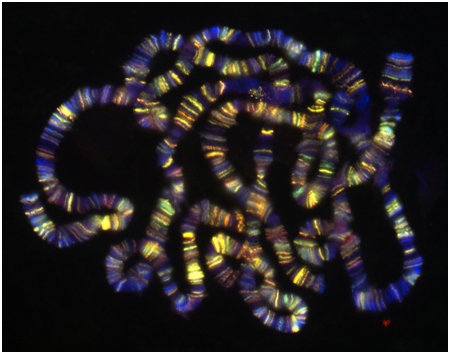2.7: Endoreduplication
- Page ID
- 4011
Endoreduplication, is a special type of tissue-specific genome amplification that occurs in many types of plant cells and in specialized cells of some animals including humans. Endoreduplication does not affect the germline or gametes, so species with endoreduplication are not considered polyploids. Endoreduplication occurs when a cell undergoes extra rounds of DNA synthesis (S-phase) without any mitosis or cytokinesis to produce an endopolyploid cell. This produces multiple chromatids of each chromosome. Endopolyploidy seems to be associated with cells that are metabolically very active, and produce a lot of enzymes and other proteins in a short period of time. An example is the highly endoreduplicated salivary gland polytene chromosomes of D. melanogaster (Figure \(\PageIndex{21}\)) which can have over 1,000 chromatids that align together and form giant chromosomes that show a banding pattern that reflects the underlying DNA sequence and genes in that chromosome region. These chromosomes have been wonderful research models in genetics, since their relatively large, amplified size makes it easy to identify and study a wide variety of chromosome aberrations under the microscope.

Figure \(\PageIndex{21}\): Endoreduplicated chromosomes from a Drosophila salivary gland cell. The banding pattern is produced with fluorescent labels. (Flickr-Elissa Lei, Ph.D. @ NIH-CCA)


